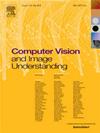Uncertainty guided test-time training for face forgery detection
IF 4.3
3区 计算机科学
Q2 COMPUTER SCIENCE, ARTIFICIAL INTELLIGENCE
引用次数: 0
Abstract
The rapid development of generative image modeling poses security risks of spreading unreal visual information, even though those techniques make a lot of applications possible in positive aspects. To provide alerts and maintain a secure social environment, forgery detection has been an urgent and crucial solution to deal with this situation and try to avoid any negative effects, especially for human faces, owing to potential severe results when malicious creators spread disinformation widely. In spite of the success of recent works w.r.t. model design and feature engineering, detecting face forgery from novel image creation methods or data distributions remains unresolved, because well-trained models are typically not robust to the distribution shift during test-time. In this work, we aim to alleviate the sensitivity of an existing face forgery detector to new domains, and then boost real-world detection under unknown test situations. In specific, we leverage test examples, selected by uncertainty values, to fine-tune the model before making a final prediction. Therefore, it leads to a test-time training based approach for face forgery detection, that our framework incorporates an uncertainty-driven test sample selection with self-training to adapt a classifier onto target domains. To demonstrate the effectiveness of our framework and compare with previous methods, we conduct extensive experiments on public datasets, including FaceForensics++, Celeb-DF-v2, ForgeryNet and DFDC. Our results clearly show that the proposed framework successfully improves many state-of-the-art methods in terms of better overall performance as well as stronger robustness to novel data distributions.
不确定性指导下的人脸伪造检测测试时间训练
生成图像建模技术的快速发展带来了传播虚假视觉信息的安全风险,尽管这些技术在积极方面使许多应用成为可能。为了提供警示并维护安全的社会环境,伪造检测已成为应对这种情况的一个紧迫而关键的解决方案,并努力避免任何负面影响,尤其是对人脸的影响,因为当恶意制造者广泛传播虚假信息时,可能会造成严重后果。尽管最近的工作在模型设计和特征工程方面取得了成功,但从新的图像创建方法或数据分布中检测人脸伪造仍然是一个悬而未决的问题,因为训练有素的模型通常对测试期间的分布变化不具有鲁棒性。在这项工作中,我们的目标是减轻现有人脸伪造检测器对新领域的敏感性,然后提高未知测试环境下的实际检测能力。具体来说,我们利用根据不确定值选择的测试实例,在做出最终预测之前对模型进行微调。因此,我们的框架将不确定性驱动的测试样本选择与自我训练相结合,使分类器适应目标领域,从而形成了一种基于测试时间训练的人脸伪造检测方法。为了证明我们的框架的有效性并与之前的方法进行比较,我们在公共数据集上进行了广泛的实验,包括 FaceForensics++、Celeb-DF-v2、ForgeryNet 和 DFDC。我们的结果清楚地表明,所提出的框架成功地改进了许多最先进的方法,不仅整体性能更好,而且对新的数据分布具有更强的鲁棒性。
本文章由计算机程序翻译,如有差异,请以英文原文为准。
求助全文
约1分钟内获得全文
求助全文
来源期刊

Computer Vision and Image Understanding
工程技术-工程:电子与电气
CiteScore
7.80
自引率
4.40%
发文量
112
审稿时长
79 days
期刊介绍:
The central focus of this journal is the computer analysis of pictorial information. Computer Vision and Image Understanding publishes papers covering all aspects of image analysis from the low-level, iconic processes of early vision to the high-level, symbolic processes of recognition and interpretation. A wide range of topics in the image understanding area is covered, including papers offering insights that differ from predominant views.
Research Areas Include:
• Theory
• Early vision
• Data structures and representations
• Shape
• Range
• Motion
• Matching and recognition
• Architecture and languages
• Vision systems
 求助内容:
求助内容: 应助结果提醒方式:
应助结果提醒方式:


